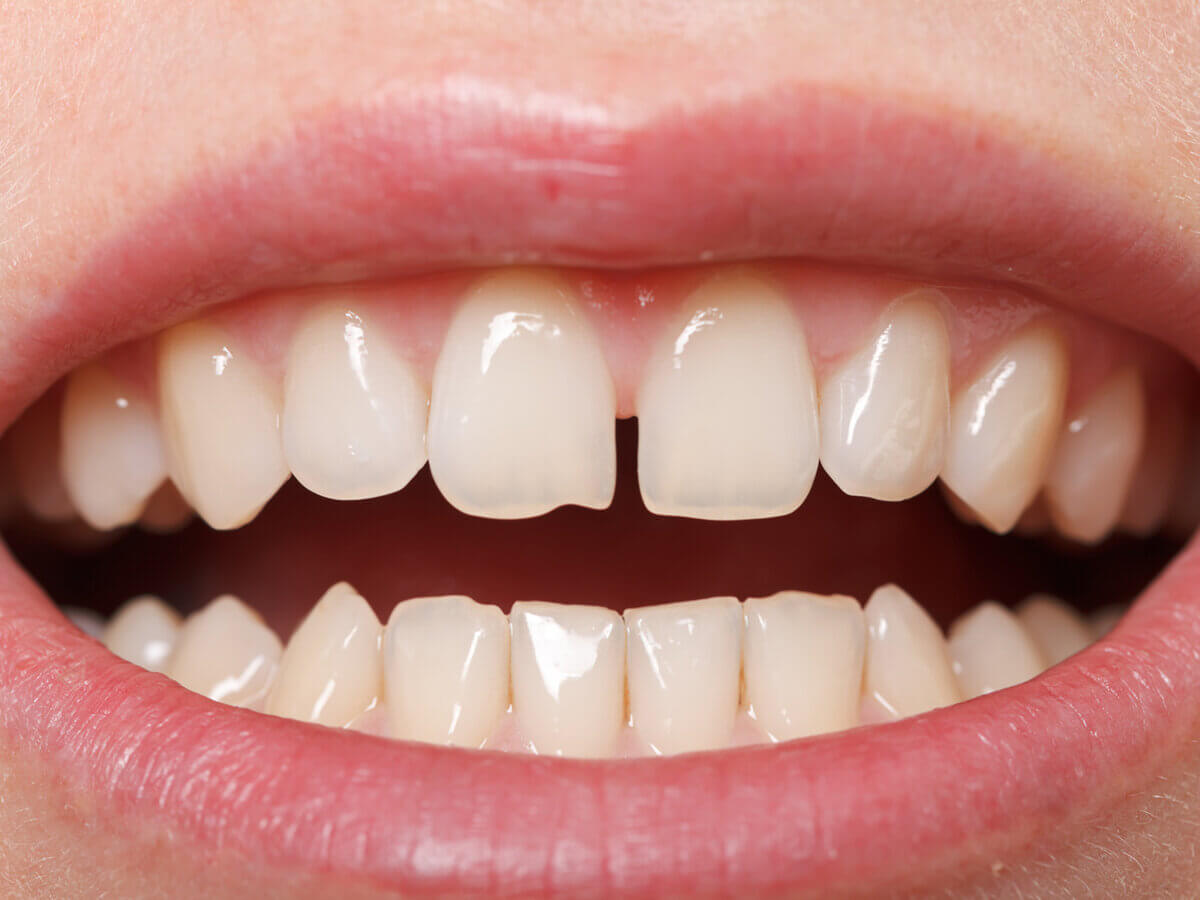Blog
Dental hygiene tips for healthy teeth & gums

What Causes Tooth Gaps and How do we Treat Them?
Tooth gaps, also known as diastema, are spaces between teeth, often seen between the two front teeth. While some people may consider it a charming trait, others may feel self-conscious about their appearance.
This article will discuss everything related to a diastema, including its causes and treatments. So to know more, keep on reading!
What causes the tooth gap?
Various factors can cause tooth gaps, and treatment options can vary depending on the severity and the underlying cause. One of the most common causes of diastema is genetics. People with naturally smaller teeth or larger jaws may have gaps between them, even perfectly straight ones.
There is also a possibility that some people may inherit a space between their two front teeth, which could cause them to feel self-conscious. Another possible cause of this condition is poor dental hygiene.
A lack of proper brushing or flossing can lead to food particles sticking between teeth, resulting in plaque and bacteria. As a result, this can lead to decay and gum disease, leading to a series of tooth gaps and eventual teeth loss.
Habits such as tongue-thrusting or thumb-sucking can cause tooth gaps. These habits may cause pressure on the teeth, causing them to shift out of place and create spaces. In addition, chewing on pencils or nail-biting can cause teeth to become misaligned, resulting in diastema.
The varying jaw and teeth size can also create space between two teeth. If the jaw is too small to accommodate all the teeth, the teeth may shift and create spaces between them. Furthermore, if the teeth are too large for the jaw, there may not be enough room for all of them, resulting in crowding.
Finally, diastema may be caused by missing teeth. When a tooth is lost, the surrounding teeth may shift to fill the gap, creating empty spaces between other teeth. If left untreated, this can lead to bite problems and further oral health issues.
Treatment options for tooth gaps
Treatment options for diastema vary depending on the severity of the gap and the underlying cause. The treatment is decided depending on the size of the gap and whether or not it causes any functional problems.
If there is no functional issue, then you might not need any treatment. However, in some cases, treatment may be necessary if the gap is causing self-consciousness issues, such as difficulty chewing.
Some of the common treatment methods are:
- Braces: Braces are often used to close gapped teeth. The teeth are gradually moved into the correct position using brackets and wires with braces, resulting in a closed gap between the teeth.
- Invisalign: Another option for treating diastema is clear aligners such as Invisalign. Unlike braces, clear aligners utilize clear trays that are practically invisible. When people are self-conscious about wearing traditional braces, this can be a good option for filling the spaces between the teeth.
- Bonding: Dental bonding is another option for treating diastema. During this procedure, a tooth-colored resin is applied to the teeth to close the spaces and improve their appearance. Dental bonding may not be the best option for severe misalignments despite its ability to fill in small gaps.
- Implants: dental implants or bridges may be necessary for treating gaps caused by missing teeth. Dental implants consist of a small metal post implanted into the jawbone, which supports the teeth, and bridges involve attaching the tooth to the surrounding teeth. However, both options are more time-consuming and expensive than other options regarding restoring the appearance and function of missing teeth.
In conclusion, tooth gaps can be caused by various factors, including genetics, poor dental hygiene, mismatched jaw and teeth size, and more. There are different treatment options based on the severity of the gap and the underlying causes; therefore, it is vital to consult your dentist for proper advice.
